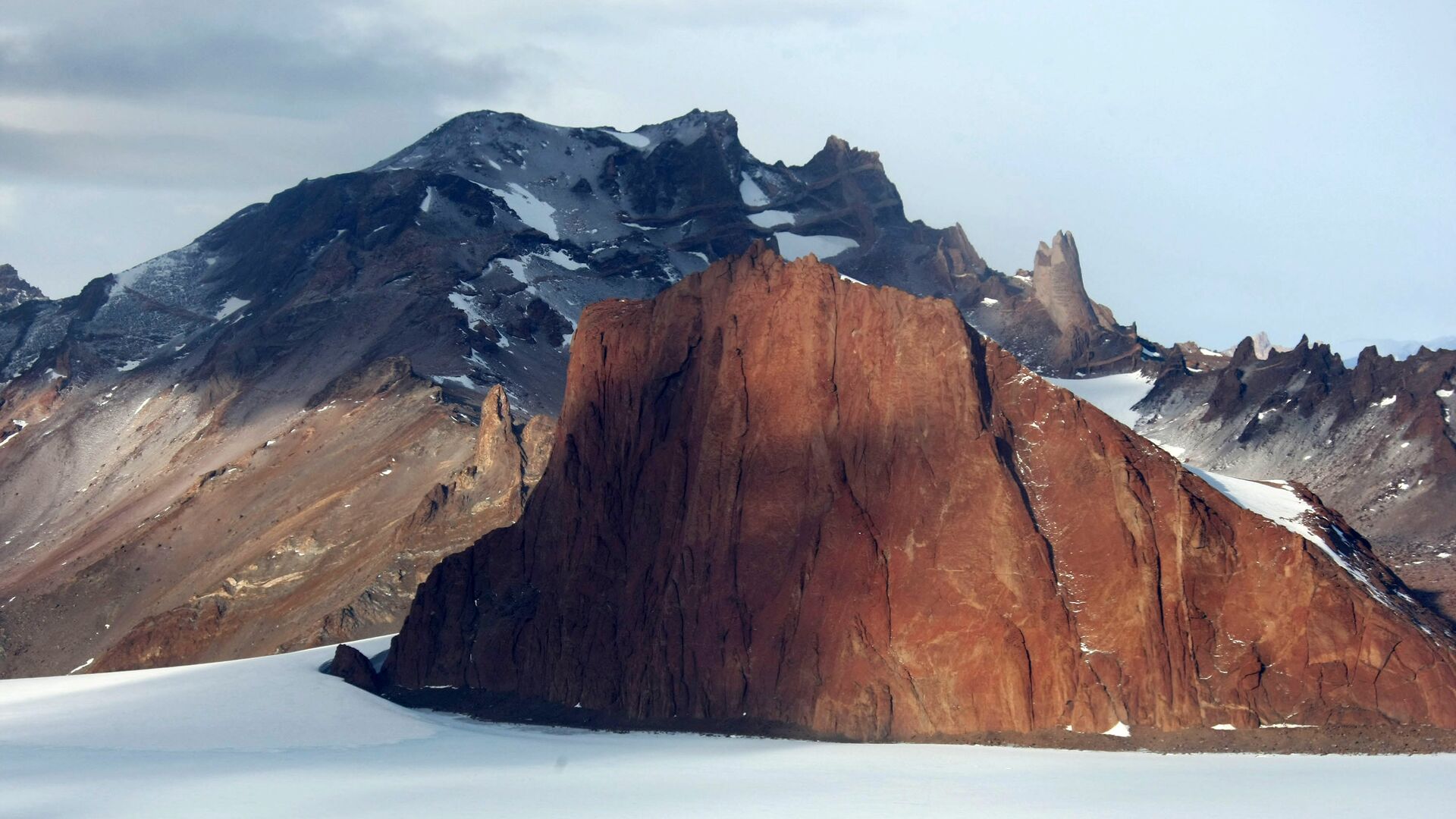https://sputnikglobe.com/20220606/north-or-south-which-pole-is-the-coldest-place-on-earth-1096058958.html
North or South: Which Pole is the Coldest Place on Earth?
North or South: Which Pole is the Coldest Place on Earth?
Sputnik International
The Artic and Antarctica are both pretty chilly, with temperatures easily plummeting below -30°C (-22° F). 06.06.2022, Sputnik International
2022-06-06T13:46+0000
2022-06-06T13:46+0000
2022-08-06T13:32+0000
science & tech
north pole
south pole
cold
https://cdn1.img.sputnikglobe.com/img/105362/40/1053624078_0:22:3000:1710_1920x0_80_0_0_d78dcda95625bde8cca3e0eb8e960652.jpg
Despite both the North and South Poles not receiving direct sunlight, it is the South Pole that takes the title of the Earth's coldest place - and here's why.The South Pole is a continent, while the North Pole is essentially an ocean. Since water cools and warms slower than land, it is less prone to extreme temperatures. This is why the North Pole is generally less cold, even recording a positive temperature once of 13°C (55°F), while the South Pole's highest recorded temperature is still way below zero at −12.3°C (9.9°F).The South Pole's average temperatures are much chillier than those of the North, but the two maintain the spots of the coldest places on Earth since the sun remains low on the horizon throughout the entire day - even in the middle of summer.When it comes to the amount of ice that both poles host, the South Pole leads again. On average, it amasses more ice than the North Pole due to the fact that it has more land ice in addition to sea ice.The South Pole's Antarctica holds about 90% of all of the world's ice. It is also predictably way colder that the North Pole's Arctic - principally because of its giant landmass that receives very little heat from the ocean.However, Antarctica's volume of ice is dramatically decreasing due to the global warming, according to Cecilia Bitz, a polar climate scientist at the University of Washington in Seattle. She notes that "sea ice loss around Antarctica and glacial land ice loss on Antarctica have had mixed changes, ups and downs, over the last 40 years when we've had reasonably good records."On average, the summer temperature in the South Pole is −28.2°C (−18°F), dropping to −60°C (−76°F) during winter. The North Pole's averages are 0°C (32°F) in summer and −40°C (−40°F) in winter.
south pole
Sputnik International
feedback@sputniknews.com
+74956456601
MIA „Rossiya Segodnya“
2022
Sputnik International
feedback@sputniknews.com
+74956456601
MIA „Rossiya Segodnya“
News
en_EN
Sputnik International
feedback@sputniknews.com
+74956456601
MIA „Rossiya Segodnya“
Sputnik International
feedback@sputniknews.com
+74956456601
MIA „Rossiya Segodnya“
science & tech, north pole, south pole, cold
science & tech, north pole, south pole, cold
North or South: Which Pole is the Coldest Place on Earth?
13:46 GMT 06.06.2022 (Updated: 13:32 GMT 06.08.2022) The Artic and Antarctica are both pretty chilly, with temperatures easily plummeting below -30°C (-22° F).
Despite both the North and South Poles not receiving direct sunlight, it is the South Pole that takes the title of the Earth's coldest place - and here's why.
The South Pole is a continent, while the North Pole is essentially an ocean. Since water cools and warms slower than land, it is less prone to extreme temperatures. This is why the North Pole is generally less cold, even recording a positive temperature once of 13°C (55°F), while the South Pole's highest recorded temperature is still way below zero at −12.3°C (9.9°F).
The South Pole's average temperatures are much chillier than those of the North, but the two maintain the spots of the coldest places on Earth since the sun remains low on the horizon throughout the entire day - even in the middle of summer.
When it comes to the amount of ice that both poles host, the South Pole leads again. On average, it amasses more ice than the North Pole due to the fact that it has more land ice in addition to sea ice.
The South Pole's Antarctica holds about 90% of all of the world's ice. It is also predictably way colder that the North Pole's Arctic - principally because of its giant landmass that receives very little heat from the ocean.
"The second reason is elevation," notes
Woods Hole Oceanographic Institution. "As you go up in altitude, the air temperature decreases (by 6.5C for each 1 km). Since the average elevation of Antarctica is 2.3 km, the air is much colder compared to the Arctic Ocean, which is at sea level."
However, Antarctica's volume of ice is dramatically decreasing due to the global warming, according to Cecilia Bitz, a polar climate scientist at the University of Washington in Seattle. She notes that "sea ice loss around Antarctica and glacial land ice loss on Antarctica have had mixed changes, ups and downs, over the last 40 years when we've had reasonably good records."
Likewise, "Arctic and Greenland ice is decreasing rapidly primarily because of global warming," she told
Live Science. "Decreasing Arctic sea ice area tends to cause even more warming, amplifying the warming that starts the ice loss."
On average, the summer temperature in the South Pole is −28.2°C (−18°F), dropping to −60°C (−76°F) during winter. The North Pole's averages are 0°C (32°F) in summer and −40°C (−40°F) in winter.

